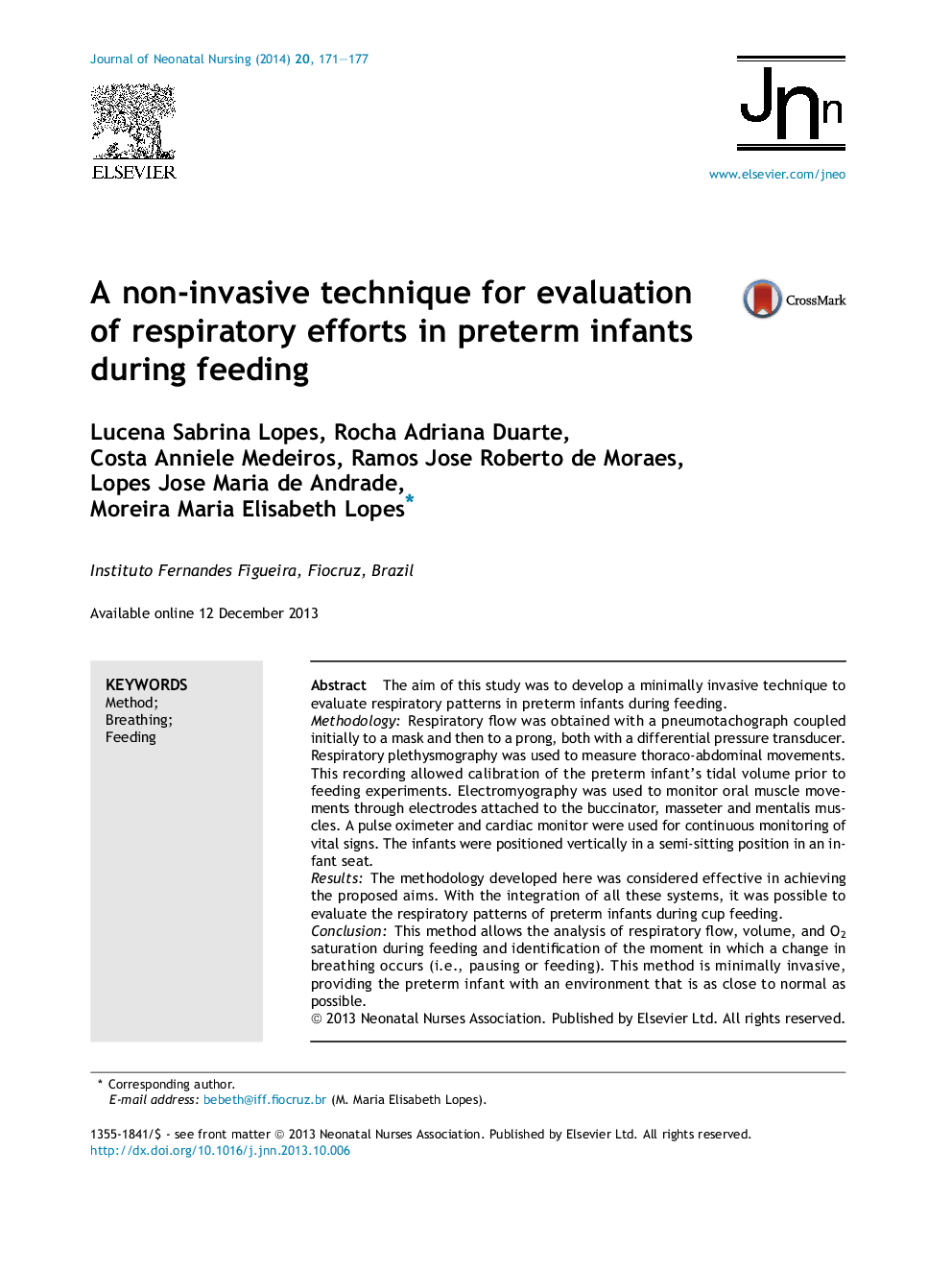| Article ID | Journal | Published Year | Pages | File Type |
|---|---|---|---|---|
| 2631478 | Journal of Neonatal Nursing | 2014 | 7 Pages |
The aim of this study was to develop a minimally invasive technique to evaluate respiratory patterns in preterm infants during feeding.MethodologyRespiratory flow was obtained with a pneumotachograph coupled initially to a mask and then to a prong, both with a differential pressure transducer. Respiratory plethysmography was used to measure thoraco-abdominal movements. This recording allowed calibration of the preterm infant’s tidal volume prior to feeding experiments. Electromyography was used to monitor oral muscle movements through electrodes attached to the buccinator, masseter and mentalis muscles. A pulse oximeter and cardiac monitor were used for continuous monitoring of vital signs. The infants were positioned vertically in a semi-sitting position in an infant seat.ResultsThe methodology developed here was considered effective in achieving the proposed aims. With the integration of all these systems, it was possible to evaluate the respiratory patterns of preterm infants during cup feeding.ConclusionThis method allows the analysis of respiratory flow, volume, and O2 saturation during feeding and identification of the moment in which a change in breathing occurs (i.e., pausing or feeding). This method is minimally invasive, providing the preterm infant with an environment that is as close to normal as possible.
